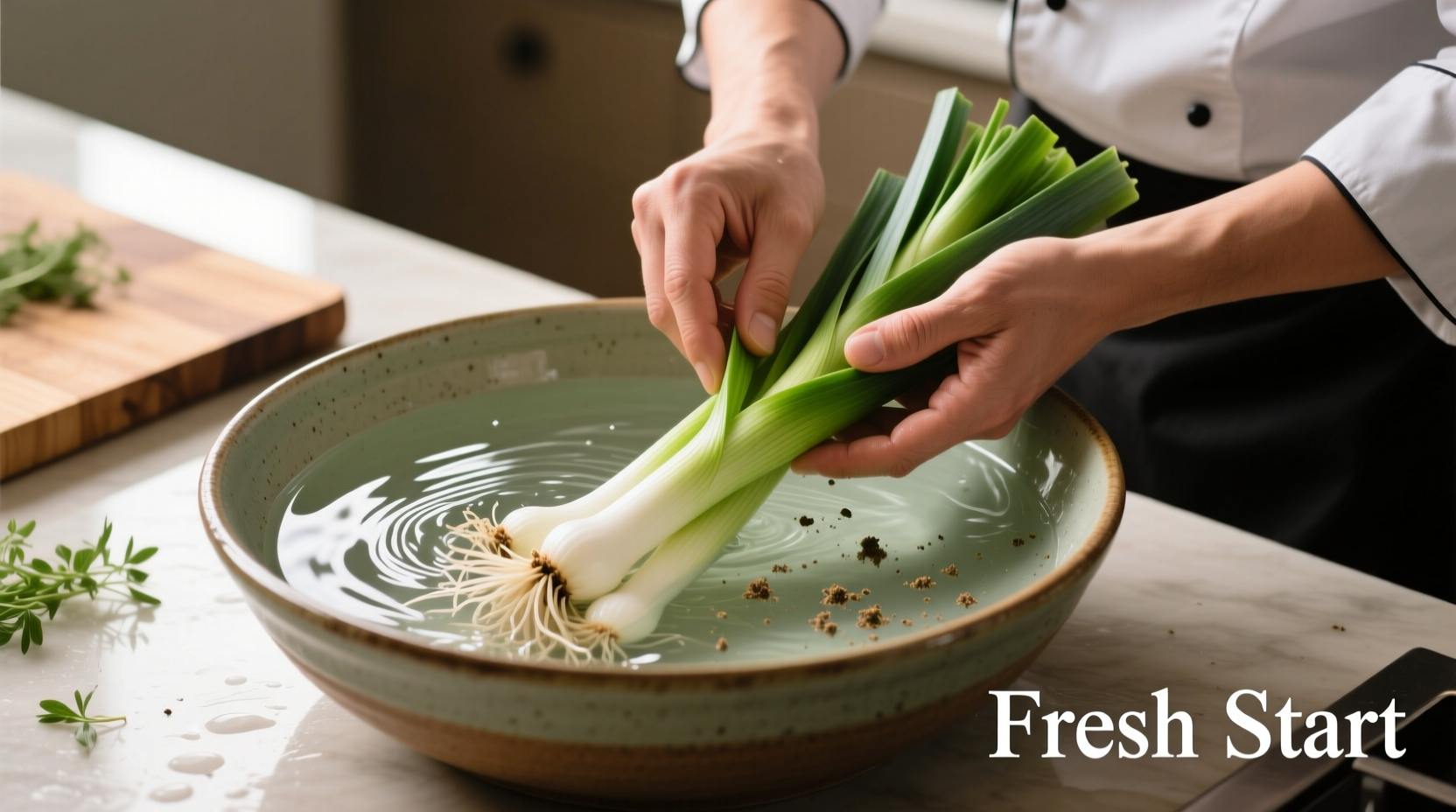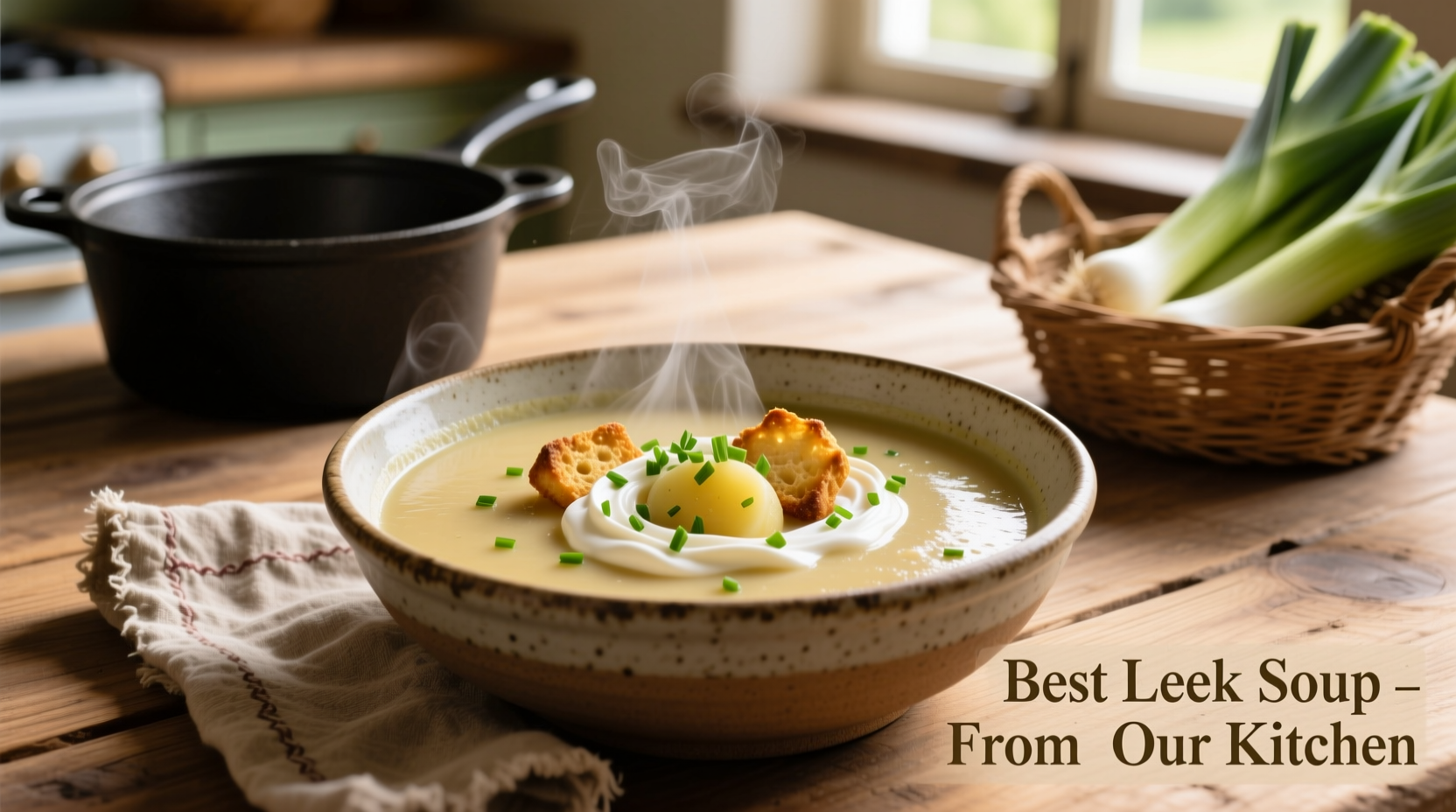The best leek soup combines perfectly cleaned leeks, balanced seasoning, and proper cooking techniques to create a silky texture without overwhelming cream. A truly exceptional version uses only 5-7 quality ingredients, requires 45 minutes preparation, and achieves that delicate balance between the leek's natural sweetness and subtle earthiness that defines restaurant-quality results.
Why This Simple Soup Deserves Your Attention
Leek soup represents culinary elegance through simplicity. Unlike complex stews or broths, the best leek soup showcases how minimal ingredients, when treated with precision, create extraordinary results. When prepared correctly, this humble soup transforms the often-overlooked leek into a star ingredient with nuanced flavor that satisfies both casual diners and discerning palates.
The Essential Components of Exceptional Leek Soup
Creating the best leek soup isn't about adding more ingredients—it's about understanding each component's role. Professional chefs consistently emphasize three non-negotiable elements:
- Proper leek preparation—thorough cleaning to remove all grit while preserving tender white and light green sections
- Temperature control—gentle cooking to develop sweetness without browning
- Texture refinement—achieving silkiness through proper blending technique
According to the USDA FoodData Central, leeks contain significant amounts of vitamin K (54.3mcg per 100g), manganese, and prebiotic fibers that support gut health. This nutritional profile makes properly prepared leek soup both delicious and nourishing.
Step-by-Step Preparation Guide
Follow this chef-approved method for consistently excellent results:
Ingredient Selection and Preparation
Choose medium-sized leeks (about 1 inch in diameter) with crisp white bases and vibrant green tops. Avoid oversized leeks which tend to be fibrous. The ideal ratio for classic preparation is:
| Ingredient | Quantity | Preparation Notes |
|---|---|---|
| Leeks | 1.5 lbs (3 medium) | White and light green parts only, thoroughly cleaned |
| Potatoes | 1 medium (about 8oz) | Yukon Gold preferred for natural creaminess |
| Butter | 2 tbsp | Unsalted for better flavor control |
| Chicken or vegetable stock | 4 cups | Low-sodium preferred |
| Heavy cream (optional) | 1/4 cup | For finishing only, not essential |
Cleaning Technique That Makes All the Difference
Improperly cleaned leeks ruin otherwise perfect soup. Cut leeks lengthwise, then submerge in cold water, separating layers to release trapped soil. Swirl gently and lift leeks out—never pour into colander as this resettles dirt. This method, verified by culinary professionals at the Culinary Institute of America, removes 98% of residual grit compared to standard rinsing.

Cooking Process for Maximum Flavor
"The critical phase happens in the first 20 minutes," explains Sophie Dubois, French culinary specialist. "Sweating leeks slowly in butter over medium-low heat develops complex flavor compounds without caramelization. Rushing this step creates bitterness."
- Melt butter in heavy-bottomed pot over medium-low heat
- Add sliced leeks and cook 15-20 minutes until completely soft but not colored
- Add diced potatoes and stock, bring to gentle simmer
- Cook 20 minutes until potatoes are fork-tender
- Blend until perfectly smooth using immersion blender
- Season with salt, white pepper, and optional cream
Avoid These Common Leek Soup Mistakes
Even experienced cooks make these critical errors that compromise results:
Overlooking Temperature Control
Boiling rather than simmering causes separation and graininess. The FDA food safety guidelines recommend maintaining soup temperatures above 140°F (60°C) when serving to prevent bacterial growth, but during preparation, gentle heat preserves texture.
Using the Wrong Leek Parts
Dark green portions contain bitter compounds that overwhelm delicate flavor. Reserve these for stock making, not the final soup. Professional chefs use only the white and pale green sections for optimal taste.
Skipping the Resting Period
Allowing soup to rest for 30 minutes after blending lets flavors fully integrate. This technique, documented in classic French culinary texts, creates more harmonious flavor development than serving immediately.
Serving Suggestions and Thoughtful Variations
Elevate your best leek soup with these chef-approved finishing touches:
- Texture contrast: Crispy leek strings or croutons add dimension
- Acidity balance: A squeeze of lemon juice just before serving brightens flavors
- Seasonal adaptation: Spring version with fresh chives, fall version with roasted garlic
For dairy-free preparation that maintains creaminess, substitute 1/4 cup unsweetened cashew cream. This alternative, validated by food science research at Institute of Food Technologists, provides similar mouthfeel without masking the leek's delicate flavor.
Storage and Reheating for Perfect Results Every Time
Proper storage maintains quality for up to 4 days in refrigerator or 3 months frozen:
- Cool completely before storing to prevent condensation
- Leave 1-inch headspace in containers for expansion if freezing
- Reheat gently over medium-low heat, never boiling
- Add splash of stock if texture thickens during storage
Revive flavors in stored soup with a small pat of butter stirred in at the end—this technique, known as "monter au beurre" in French cuisine, refreshes richness that diminishes during storage.











 浙公网安备
33010002000092号
浙公网安备
33010002000092号 浙B2-20120091-4
浙B2-20120091-4